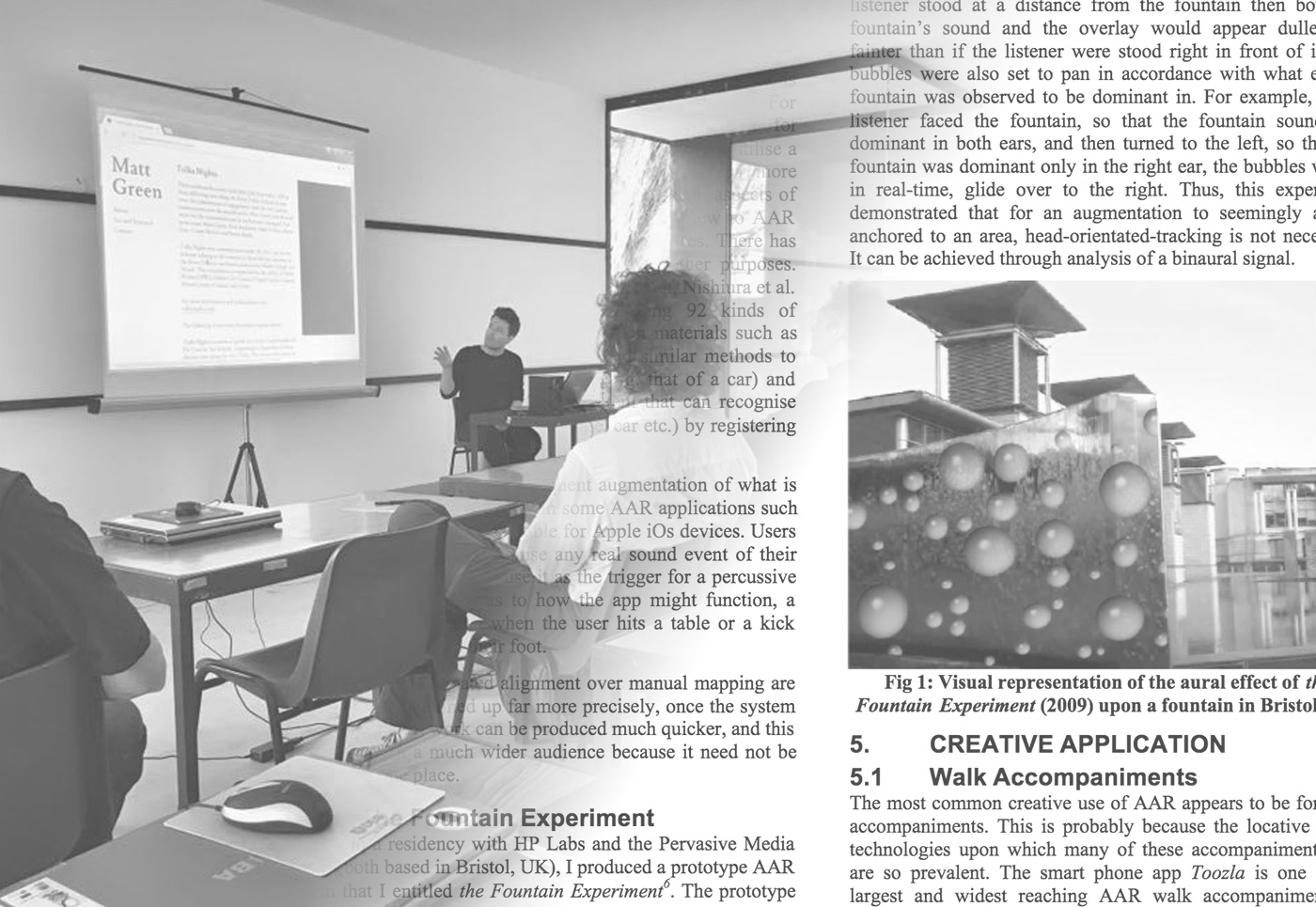Green, M. (2017), ‘The Acoustic Atrium: An Imagined Communal Space for Sound Creativity’ Proceedings of International Festival and Conference on Sound in the Arts, Science and Technology (ISSTA), Dundalk Institute of Technology, 2017.
The paper concerns the Centre for Creative Arts, a new building scheduled to open 2020 that will house Leeds Beckett University’s School of Film, Music and Performing Arts as well as Fashion. A major desire for the new building is to bring the school and its students in to greater contact with the public. Accordingly, the new building is to include a number of public amenities and spaces including a theatre, black box theatre and cinema as well as an atrium, foyer and café/bar area.
In March of 2017, the author hosted a workshop concerning sound, architecture and the Centre for Creative Arts. Central to the workshop was ‘acoustic design’, an interdisciplinary practice outlined by R. Murray Schafer that includes “the imaginative placement of sounds to create attractive and stimulating acoustic environments for the future” (Schafer, 1994, p.271). The workshop commenced with insight into what acoustic design is and as to the history and future of acoustic design, its principles and practices in architecture and urban planning. Following this, the feasibility and possible impact of acoustic design in the development of the Centre for Creative Arts was debated. The day ended with a design activity that yielded a number of ideas for aural architectures and site-specific sound installations in the Centre for Creative Arts.
Many of the ideas generated in the workshop’s design activity regarded supporting student performance and presentation of sound and music work in the communal spaces of the new building. Additionally, a number of ideas concerned provisions for studying acoustics, sound and music in these spaces, and for creating and making in these spaces too.
The paper provides an overview of the workshop before focusing upon imagining a flexible, multi-use, technology-driven space that respects and advocates sound and listening, and supports performance, exhibition, study, practice and reception of creative sound and music work. In this imagining, applicable examples of past and present acoustic architecture, site-specific art and pervasive computing will be referenced.
Schafer, R. M. (1994), The Soundscape: Our Sonic Environment and the Tuning of the World, Destiny Books.
